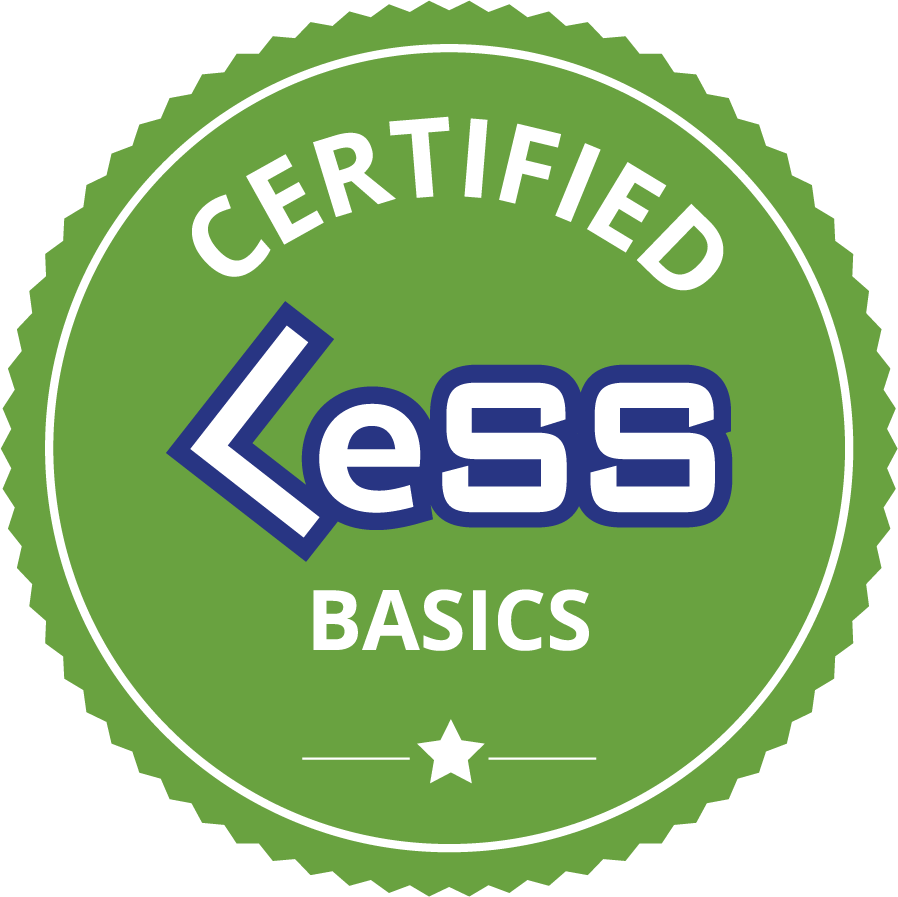Certified LeSS Basics - Learning Objectives

|
|
download pdf download png |
Situational Factors to Consider
Specific Context of the learning design.
CLB class is taught in classroom with live audience no remote participation is recommended. Recommended maximum class size is 30 participants. The minimum length of the one day CLB course is 8 contact hours.
General Context of the learning situation
The participants have passed Scrum Foundations course from Scrum Alliance or Scrum.org or have acquired same knowledge from reading and practicing. Participants knowledge level can be evaluated using pre-course evaluation for Scrum and LeSS from less.works.
Nature of the Subject
This introductory course and the topics covered are mainly conceptual.
In contrast to the 3 day Certified LeSS Practitioner course (CLP) where participants will spend in-depth time experiencing and practicing elements such as systems modelling, queueing theory and adoption, including in-depth treatment of case studies, the CLB is a brief introduction to LeSS.
Characteristics of the Learners
The main audience is developers, Scrum Masters, Product Owners, Agile Coaches and managers in product development groups who are interested in expanding their knowledge on various agile scaling approaches. The main learning goal for participants is to gain more information on what LeSS is, what LeSS is not, the purpose of LeSS and how it may be applicable in their working environment. Students will learn where to find more information about LeSS and what to do if one is interested in adopting LeSS in their company.
Characteristics of the Teacher
All teachers are experienced Scrum experts who are able to interact with and engage course participants. They are passionate advocates of agile values and principles, and understand that LeSS is a consistent way of achieving agility when working with many teams. All teachers are certified LeSS practitioners, and have participated in the required learning for delivery of this course. Only teachers who demonstrate a deep understanding of the topics they need to teach will be vetted.
Learning Goals
Foundational Knowledge
A year (or more) after this course is over, we want and hope that participants will still be able to:
- Articulate why LeSS
- Explain how LeSS is a Scrum-based approach on scaling
- Summarize what impact this has on the organisational design (structures, policies, etc.)
- Explain the dynamics of component teams vs. feature teams
- Explain all LeSS roles and their purposes
- Explain why there is one and only real PO and not so-called team POs
- Explain the LeSS Complete diagram, organizing LeSS information in terms of the principles, rules, guides, and experiments
- Explain how LeSS scales over ~8 teams
- Know the existence of and location of major learning resources at less.works, including at least these sections: Why LeSS?, Introduction to LeSS (chapter 2 from book 3), the rules, the online videos & books chapters. (this should be done with at least a “2” minute online tour of these elements, by the trainer)
Application Goals
After the class we expect that participants will have skills to:
- Analyze their current organisations’ state
- Evaluate the applicability of LeSS in their current work environment
Integration Goals
After the class we want and hope participants are able to make following the connections:
- LeSS is Scrum.
- What organisational impacts LeSS adoption may cause.
- What impact would LeSS adoption make to participants’ work life.
- LeSS is building on top of modern management thinking. Eg. Peter Senge, John Seddon, W. Edwards Deming, Taiichi Ohno, Richard Hackman, Robert Sutton and Jeffrey Pfeffer. The authors and practitioners of LeSS advocate understanding leading management thinkers and prevailing evidence in terms of management thinking, and participants are encouraged to continue learning post training.
Human Dimensions Goals
After the class we want and hope participants have made the following realisations:
- There is no blame. People’s behaviour is determined by the system they are in (managers have a responsibility to change the system).
- What participants could or should learn about themselves
- What is preventing them from influencing the organization they are currently in
- What participants could or should learn about understanding others and/or interacting with them
Caring Goals
After the class we want and hope participants have
- Interest in learning more about topics discussed in the class
- New ideas about their future
